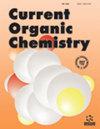Recent Advancements in Development of Radical Silylation Reactions.
IF 1.7
3区 化学
Q3 CHEMISTRY, ORGANIC
引用次数: 0
Abstract
Transition metal-free radical hydrosilylation of alkynes and factionalized alkenes to vinylsilanes, organosilanes from alkenes, radical silylative cyclizations for sila heterocycles, aromatic dehydrogenative radical silylation, sila-amino acids, silyl hydroperoxides by using transition metal-free reaction conditions such as peroxides, photocatalyst, hydrogen atom transfer catalyst, radical initiators have become one of the most important and useful methodologies for the construction of C-Si bonds for their synthetic applications. In order to demonstrate the growth in this area, this review highlights the last twenty years of success in the fields of silylation of aromatics, silylative cyclizations of sila heterocycles, synthesis of vinylsilanes by hydrosilylation of alkynes, and functionalized alkenes, organosilanes from alkenes and dehydrogenative approaches for vinylsilanes involving radical mechanisms. We believe that summarizing these methods would be very useful for the chemists who are interested in the synthesis of organosilicon compounds for drug discovery or the development of silicon-based materials for industrial applications.自由基硅基化反应的研究进展。
利用无过渡金属反应条件(如过氧化物、光催化剂、氢原子转移催化剂),烷基和烯烃的自由基硅氢化反应生成乙烯基硅烷、烯烃的有机硅烷、硅杂环的自由基硅基化环化、芳香族脱氢自由基硅基化、硅-氨基酸、硅基氢过氧化物。自由基引发剂已成为构建碳硅键的最重要和最有用的方法之一。为了证明这一领域的发展,本文重点介绍了近二十年来在芳烃的硅化、硅杂环的硅化环化、炔氢硅化合成乙烯基硅烷、功能化烯烃、烯烃有机硅烷和乙烯基硅烷的自由基脱氢方法等领域取得的成功。我们相信,总结这些方法将对那些对有机硅化合物的合成感兴趣的化学家有很大的帮助,可以用于药物发现或开发工业应用的硅基材料。
本文章由计算机程序翻译,如有差异,请以英文原文为准。
求助全文
约1分钟内获得全文
求助全文
来源期刊

Current Organic Chemistry
化学-有机化学
CiteScore
3.70
自引率
7.70%
发文量
76
审稿时长
1 months
期刊介绍:
Current Organic Chemistry aims to provide in-depth/mini reviews on the current progress in various fields related to organic chemistry including bioorganic chemistry, organo-metallic chemistry, asymmetric synthesis, heterocyclic chemistry, natural product chemistry, catalytic and green chemistry, suitable aspects of medicinal chemistry and polymer chemistry, as well as analytical methods in organic chemistry. The frontier reviews provide the current state of knowledge in these fields and are written by chosen experts who are internationally known for their eminent research contributions. The Journal also accepts high quality research papers focusing on hot topics, highlights and letters besides thematic issues in these fields. Current Organic Chemistry should prove to be of great interest to organic chemists in academia and industry, who wish to keep abreast with recent developments in key fields of organic chemistry.
 求助内容:
求助内容: 应助结果提醒方式:
应助结果提醒方式:


